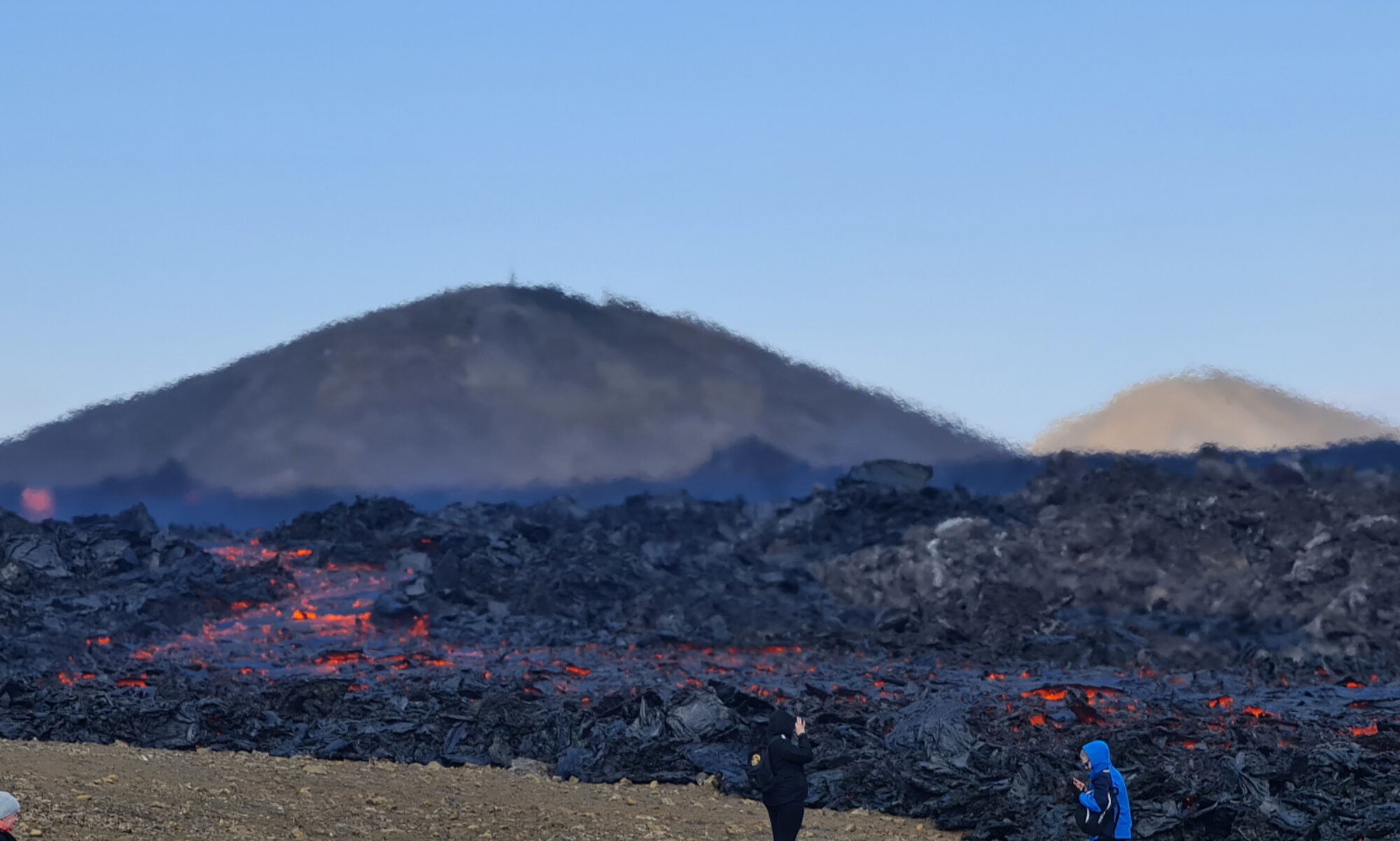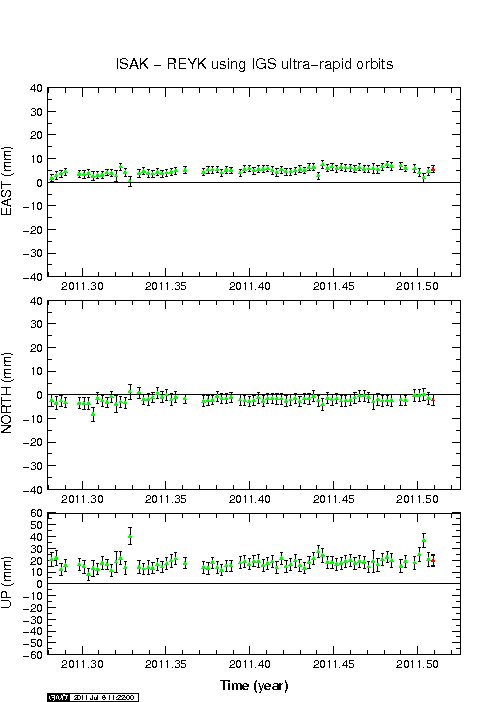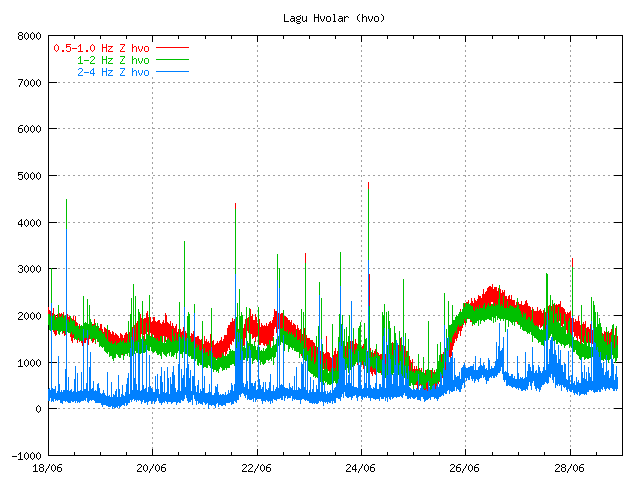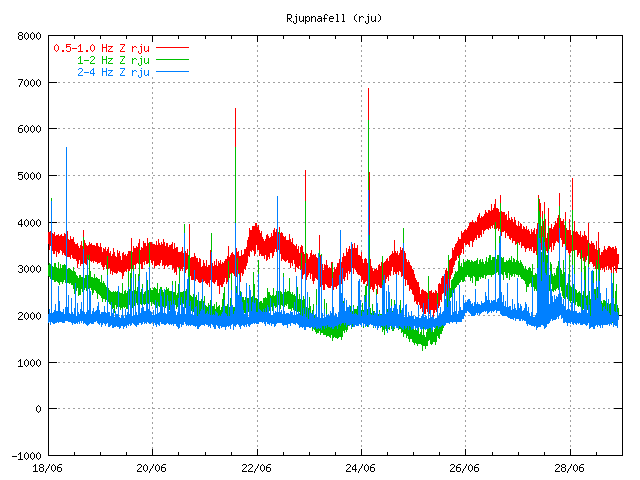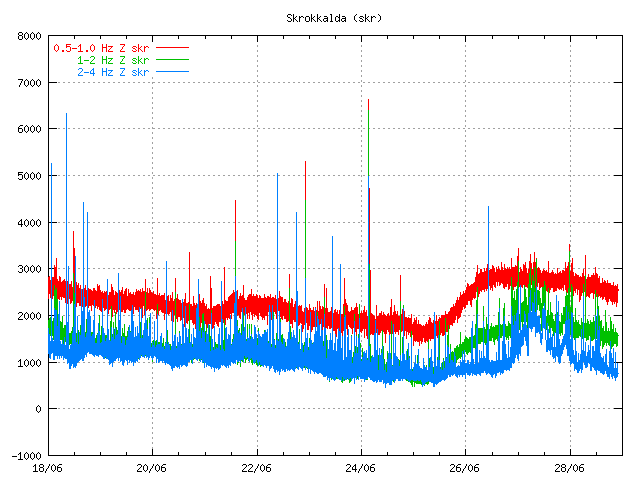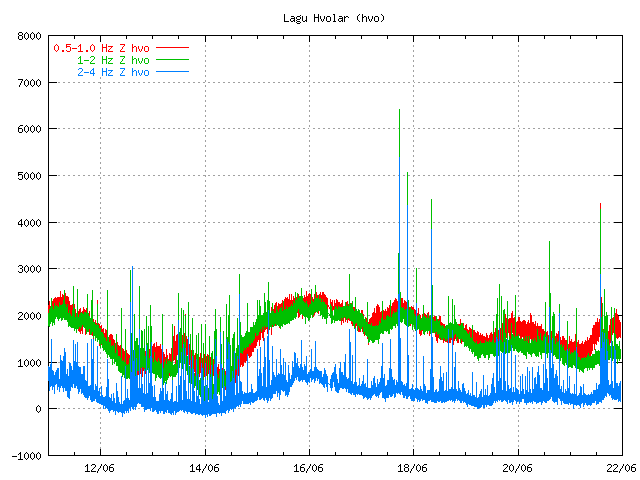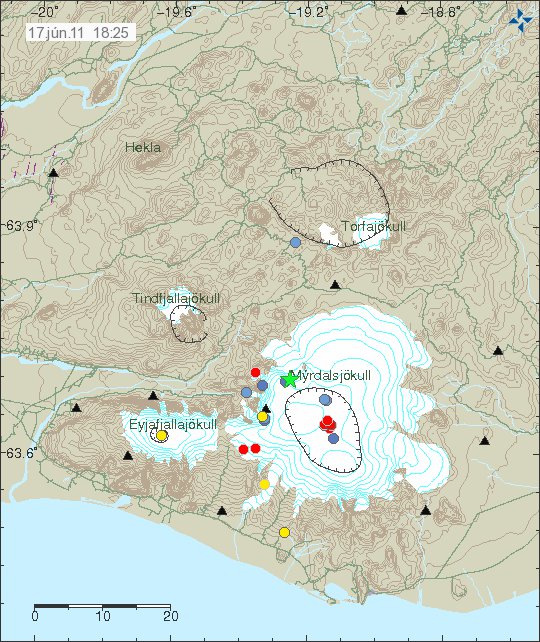Here is an short update on few things.
Hekla volcano: Everything is quiet at Hekla volcano. Movements of magma deep down in the crust have not changed that fact. Nobody knows when it is going to stop begin quiet. Until it does. There is no need to worry about it. Update 2: The movement on the GPS instruments was most likely an deep dike intrusion in Hekla volcano. It was not followed by any earthquakes for some reason.
Correction: I did say that in my earlier post that if there was an emergency in regards to Hekla volcano due to an eruption. The Public Emergency Authority in Iceland would send out an SMS to everyone in the local area. This is half wrong and half correct. They are going to send an SMS, but apparently only to registered locals in the area. Few years ago there was talk of setting up an system to send SMS to everyone around Hekla volcano if an eruption would start. But that system appears not to have gone past the idea stage. I do not watch the changes in this field, so I did miss that. For that I am sorry.
Earthquake swarm at Reykjanes Ridge: Few days ago there was an minor earthquake swarm at Geirfulgasker on the Reykjanes Ridge. This was normal tectonic activity for this area. But it has been having earthquake swarm every few months now for an long time. This earthquake swarm was an small one compared to many other earthquake swarms that have been taking place there.
The media hype: To Daily Mail in the UK. I am not an volcano expert. I also don’t claim to be one. You can’t find that claim on this blog. Because I am not an volcano expert. You also got an wrong volcano in your news and you spelled the name wrong on Hekla volcano. You should correct your news if you want to call your self an newspaper. Also, nobody sad anything about possible size of an ash cloud from Hekla volcano. You just made that up. The media should also relax, drink less coffee. There is nothing going on at the moment. You can hype all you want when something interesting is going on. If the media doesn’t get what I am saying, this here (Youtube, Newswipe) should help you get the clue. I at least remain hopeful, or something.
Help needed!: I need help. I am broke again (demit!). I might be having an low paying job. But my pay goes mostly up to my debts and July was an bit harder then I expected (I try to leave something for food, but this time around it did not work out as I planned it). But that was due to the last VISA payment that I am ever going to make. I am going to get paid on the 1 of next month at least. I am now only left with 2500 ISK (€15) and €24 (182 DKK) to buy food (total 39€) for the rest of the month or until I get paid from my job. My social welfare (that I working toward getting off one day) is always paid on the 1st of every month. My rule about asking for donations is that it is the only option that I have left. Besides not eating anything. But I don’t really regard that as an good option. My status is that the worst is most likely over now, since no more surprise VISA bills (I closed it and I am glad!) and now it is just steady payments of the overdraft until it is finished. But that going to take about 6 to 11 months to finish. Depending on the work income that I have until the end of October this year. If anyone wants proof of how broke I am, I can provide it.
So I once more ask again for donations so I can eat something this month. I am living cheap, but at the moment it did not work out as I planned. Thanks for the help in advance! 🙂
Other: I cancelled going to school this autumn. I am going to work more to pay down my debts faster. Then I plan moving to Denmark in the year 2012, when I have the money to move again. But from end of October I am going to provide regular and good updates in regards to volcanoes and earthquakes, since I won’t be working from that time in companies. But I am going to be working on a book that I am going to publish early 2012 (I hope).
Update 1: For everyone how donates there is going to be an e-book (pdf format only from me) about Icelandic volcano eruption for anyone how wants a copy. But I plan on writing book about volcano eruptions in Iceland soon after they happened. I finally made up my mind on how to write that type of book. It won’t take me an long time write those books, since it is just facts and details about the eruption. I am also going to sell those books on Amazon Kindle and web page named Smashwords. I hope to release the book about Eyjafjallajökull volcano eruption 2010 in December 2010 or January 2011.
Blog post updated at 00:27 UTC on 8. July 2011.
Blog post updated at 07:19 UTC on 8. July 2011.
